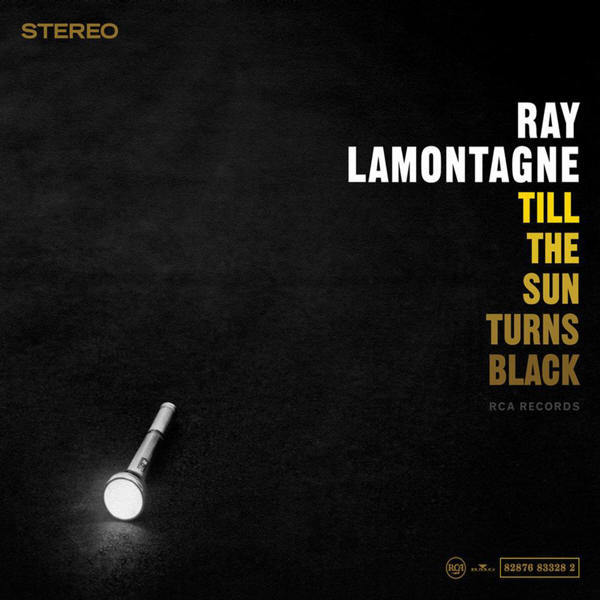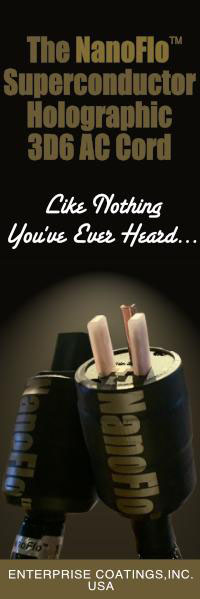Parasound Halo 2.1

 The Parasound Halo 2.1 Channel Integrated Amplifier has been reviewed elsewhere and garnered enthusiastic support for what it delivers. The Halo’s feature set and preamp are based on other well-regarded Parasound products – the power amp stage is a John Curl design, as are the circuits. The Halo 2.1 has some essential future features – digital inputs, crossover and high quality, 24k-gold-plated five-way binding posts and both balanced and single-ended gold-plated line-level RCA jacks propagate the Halo’s rear panel.
The Parasound Halo 2.1 Channel Integrated Amplifier has been reviewed elsewhere and garnered enthusiastic support for what it delivers. The Halo’s feature set and preamp are based on other well-regarded Parasound products – the power amp stage is a John Curl design, as are the circuits. The Halo 2.1 has some essential future features – digital inputs, crossover and high quality, 24k-gold-plated five-way binding posts and both balanced and single-ended gold-plated line-level RCA jacks propagate the Halo’s rear panel.
One nitpick? The RCA jacks are tightly spaced, so I could not use my usual active Synergistic Research interconnects, only non-active IC’s would do. As a matter of fact, while road-testing Jack Bybee’s Plug-In Interconnect RCA Bullets (Crystal Series), I had to spin off the locking collars in order to accommodate the tight jack spacing. Granted, the collars on he Bullets are quite generous in material, the RCA jacks are just too tightly spaced on the Parasound Halo integrated’s back panel to use well-endowed interconnects.

The Halo’s build quality is top notch, with a heft that lets you feel the investment in your lower back (this is a heavy amp) when lifting it out of its carton. The parts chosen for the Halo’s build are all top notch products – an order for the Alps volume control alone takes about six months lead time. The feature set is based on that of Parasound’s P5 preamplifier, which includes a phono stage along with digital inputs for USB, optical (Toslink), coax (S/PIDF), auxiliary source inputs as well as a front-mounted mini jack for portable players and phones along with a front-mounted mini headphone jack. The front panel 3.5mm input provides extra gain to compensate for the low gain of MP3 players and phones. Devices other than these connected through this jack may distort. Also accessible on the front are bass, treble, tone bypass, input selector, sub level, balance and a lighted volume control. Across the lower front are a on/off/standby switch, which also serves to alert you of set up errors, along with lighted source sections for aux, phono, opt, coax, USB, bypass and mute selectors.

 The Halo 2.1 features a phono section with inputs for both MM and MC cartridges, with two user selectable load settings, 100 ohms or 47k ohms resistance for the MC side, providing choice for the user as to which sounds best for their needs.
The Halo 2.1 features a phono section with inputs for both MM and MC cartridges, with two user selectable load settings, 100 ohms or 47k ohms resistance for the MC side, providing choice for the user as to which sounds best for their needs.
The remote is nicely designed and its simplicity is a welcomed sight. Larger than most, it has a comfortable feel in my large hand. With generous spacing of its keys and a button for back-lighting as needed, the Halo’s remote fits the bill, offering source selection, volume up/down, tone on/off, power on/off, muteand backlight options, but no options for track navigation. The Halo’s lighted front panel and volume control looks good and the volume knob rotates both manually as well as with the remote.
Referencing the manual, the Parasound Halo Integrated is a 2.1 channel integrated that’s been designed for the highest performance for serious two channel listening and ease of integration with a surround sound system. The Halo contains a built-in all analog adjustable crossover (20Hz to 140Hz) for one or more subwoofers in both stereo and surround sound applications. This build-in crossover allows the user to restrict a subwoofer’s cutoff frequency as well as restrict bass output for your monitors/speakers directly from the integrated itself. A pre output stage allows the user to add an amplifier for bi-amping or a second amp for driving a pair of speakers in another room.
The theater bypass/amps input makes the Halo not only suitable for two channel use but also for powering the left and right channels in a surround sound system. With the Halo superior to any surround receiver, it can take the load off the receiver by powering the left and right channels separately, leaving the receiver to power the center and surround channels. In bypass mode, the Halo’s volume control doesn’t work and volume adjustments must be made from the surround sound receiver’s remote.
The Halo 2.1 provides 160 watts per channel into 8 Ohms and features a dual-mono power supply with an over-sized toroidal power transformer and the power amplifier section has good stuff under the hood. According to Parasound’s Bob MacDonald, “The volume potentiometer in the Halo Integrated uses an audio/logarithmic taper. This means the sound level ramps up slower than other types such as linear and reverse log. Human hearing (and the dB scale) are logarithmic which makes the audio taper potentiometer a better match with our ears and perceived sound levels. MacDonald continues, although the audio taper ramps up slower, the three types end at the same point. Using the audio taper volume control gives the user finer adjustments in listening levels, a smoother ramp up speed and makes the volume control less jumpy when using the remote control. A preamp or integrated that uses a linear volume control will have little change above the 1-2 o’clock position while the Audio taper continues to increase significantly all the way to the maximum rotation.”
I first set up the Halo 2.1 with my Eminent Technology LFT-8b hybrid’s – inefficient power-loving 82dB sensitive beasts they are. I was initially alarmed that I had to set the volume control quite high to get the speakers to sing at a decent, but not loud, listening level… you could still converse easily. I don’t listen overly loud, just loud enough for the speakers to open up and wrote Parasound, concerned that such volume control settings might adversely affect the ET’s with an unexpected clip. A volume setting at the 3:30 position seemed fraught with disaster, so I reached out to Parasound for some advice, also concerned that the review unit might be damaged – it seemed to me the 160 watts per channel should be more that enough to drive the ET’s without going too far past 1:00 on the volume knob… assuming the preamp gain is sufficient. Granted, it is hard to compare volume setting from one system to another.
MacDonald responded, saying “The preamp section of the Halo Integrated has maximum gain of 10dB. For a standard 2V line level input this means the preamp output would be about 6V. The amplifier in the Halo Integrated is a standard 29dB of gain and power output of 160W @ 8 Ohms. This means clipping would occur at a preamp voltage of about 1.5V so there is more than enough headroom. Even with your very low efficiency speakers there should be plenty of gain.”
A Little Volume Anxiety
A little background: My wife and I live in a large, one-room loft, 32’ wide by 42’ in length with 12’10” ceilings… a lot of air to move. I tend to use a 200 watt stereo amplifier with the LFT-8b’s, though I also set them up with two bridged-to-mono 140 watt amplifiers from time to time and get great sound from both. Even a recently reviewed all-in-one music center with 125 watts pushed the ET’s to louder than normal levels at lower volume positions topping out at a 67 on the 100 step remote.
Generally speaking, my volume settings playing through the Halo varied from 10:00 to 3:30, depending on the source used… and speakers used – and the higher setting also happened when listening through the headphone section. Playing digital files provided greater gain and higher volume at lower settings. My Well Tempered Record Player, with its custom DC thread belt motor by Audio Advancements and Audio-Technica AT440MLb moving magnet cartridge needed higher volume settings up to the 3:30 position due to the 4mV output of the cartridge. With a maximum volume setting at the 5:30 position, this tended to cause me undo anxiety. There were times when quiet music, like Melody Gardot’s ‘Currency of Man’ craved a climb past that 3:30 spot. I only pushed to that mark when I knew there would be no surprises in the music… I hate tweeter-busting surprises.
To qualify the gain issue, I brought up my circa 1994 Spica TC-60 speakers, with their 87dB sensitivity. Thankfully, the listening volume through these more efficient speakers hovered between 10:00-11:00 for digital files and between 1:00-2:00 when playing vinyl with the Audio Technica AT440MLb (with its 4mV gain) through the MM section of the phono stage. Perhaps the preamp stage’s gain is on the low side to avoid distortion, but my ‘performance anxiety’ when Playing through the Eminent Technology LFT-8b’s persisted.
Device play was enjoyable through the front panel AUX input. Again quoting MacDonald, “… standard iPods (or phones) put out far less than the standard of 2V such as a CD player. This is why the front panel AUX input has an additional 12dB of gain which compensates for the iPod/phone low output. And of course the phone or iPod needs to have its volume control set close to or at maximum. You should have more than enough volume from a CD player source.” This proved true indeed.
The 32-bit DAC section utilizes a vey high resolution 384kH ESS Sabre32 Reference DAC IC. The OPT input is a Toslink receiver that accepts PCM digital signals up to 192kHz with 16 or 24 bit word length (to achieve this output the cable must be short). The S/PDIF RCA Coax jack is limited to 192kHz with 16 or 24 24 word length. Parasound says it works best with a true 75 ohm cable (regular RCA cables produce high levels of jitter). The USB B input for play from your computer and streaming music services and supports up to 384kHz files with 16, 24 or 32 bit word length via USB 2.0 and above and works natively with Apple’s OS. The USB input also accepts native DSD and DoP files. Users of Windows computers must first download and install the drivers, available from Parasound. For highest quality play, Parasound recommends that the volume through your computer’s software be set to 100%, then adjust your playback level with the Halo’s volume control.
Listening
I spent much of my time playing a variety of files from my MacBook Pro through the Halo’s USB B input, alternating between the Transparent Performance Digital Audio cable and the USB Disruptor. The USB Disruptor outlived the Transparent. Higher gain from the USB buss tempered my volume setting anxieties. Only when I switched to phono did my heart rate tend to increase as the volume knob twisted higher.
Our nearby family slipped over for a get together and I played music from the MacBook Pro through the Parasound all that evening. When leaving, the music was described as ‘fleshy’ and my wife agreed with the gusto. Even the Spotify stream, Sera Una Noche’s ‘La Segunda’ (2003 MA Recordings), sounded absolutely fantastic – earthy, airy and full of ambience… in short, impressive.

The glitch. I few times, I switched from phono to USB and the computer refused to recognize the Parasound Halo integrated. Only after turning the unit into Standby and back on again did the MacBook Pro recognize the integrated through the Sound Control panel and Amarra Hi Fi’s preferences. Thankfully this happened but a few time in a few months of listening.
Drift Away from Haroula Rose’s “Here The Blue River” (2016 Little Bliss), a CD ripped to lossless and played through the Halo 2.1 USB, is a woody track with minimal instrumentation. Realistic timbers of banjo and guitar permeate the tune, all very natural in body, joined by a wonderfully woody clarinet, dynamic percussion and strong, uncompressed bass.
 Melody Gardot’s latest “Currency Of Man” (2015 Verve) on vinyl played next. Quiet, yet dynamic with a solid bass foundation firmly grounds the performance. The soundstage is wide and imaging is spot on. What You Gonna Get quiet vinyl with volume knob in the 3:15 position. Whew. There’s an ease to the Parasound Halo’s presentation – not at all forced nor edgy. The word natural comes up time and again. The Halo renders the tiniest hitch in Melody’s breathing, with her positioned so close to the mic.
Melody Gardot’s latest “Currency Of Man” (2015 Verve) on vinyl played next. Quiet, yet dynamic with a solid bass foundation firmly grounds the performance. The soundstage is wide and imaging is spot on. What You Gonna Get quiet vinyl with volume knob in the 3:15 position. Whew. There’s an ease to the Parasound Halo’s presentation – not at all forced nor edgy. The word natural comes up time and again. The Halo renders the tiniest hitch in Melody’s breathing, with her positioned so close to the mic.
Don’t Misunderstand a nice earthy presentation, ethereal yet grounded with a nice depth to the strings. Don’t Talk is almost ‘tubey,’ with warmth and a very nice sense of space. Both macro and micro dynamics are well-formed, with a graceful easy flow to the strings. It makes me want to keep turning it up louder and louder. It’s Gonna Come brings a nice bloom to the bass and a wonderful rasp to the horn. Subtle sounds have a presence and strings sound full and passages have an added velocity, body and breadth. Great low bass with a restrained wallop, just barely held at bay from rushing forth crunchy, squelching, blatting sax accompanying very sexy vocals.
Same To You has a quiet intensity, on quiet vinyl, prompting me to ease the volume knob to the 3:15 position. Whew. There’s an ease to the Parasound Halo’s presentation – not at all forced nor edgy. The word natural comes up time and again. The Halo renders the tiniest hitch in Melody’s breathing, with her positioned so close to the mic. No Man’s Prize is a fantastic track, replete with pleading horns that bray and cry in the background with the sadness of a mournful train whistle… looming, gloomy and hauntingly wonderful, a raspy tangle of hashy goodness. Harkening back to the sound of her previous project, My One And Only Thrill. the last handful of songs are more somber, elegant and less urgent, with Burying My Troubles my pick as the stand out. Sadly, this quiet vinyl had a few printing defects through just that one track.
 Ray La Montagne’s “Till The Sun Turns Black” (2006 Sony Legacy), played here on vinyl, has a big, boldly, punctuated and well-produced sound. The opening track, Be Here Now, is highly textural, with great guitar body and punch. At a 3:30 volume setting, I was rewarded with a commanding low end and Instrumental timbers that were beautifully reproduced with both air and body. La Montagne’s room-filling vocal has a whispered, effortless, yet urgent delivery. I love the use of quiet, laid back horns. On Three More Days La Montagne’s growl is infectious groove, with a vocal reminiscent of a restrained Joe Cocker. Guitar, electric piano and horns stir up a vintage R&B feel. Can I Stay Rock solid imaging and it’s articulate without being etched. The sweetness of the string arrangement makes this track feel like a Beatle ditty – very nicely presented. You Can Bring Me Flowers once again finds La Montagne with that Cocker growl. With its rhythmic guitar line and gorgeous depth to the percussion and horns, this track has a drive well presented through the Parasound Halo. An unexpected flute solo, brief yet breathy and beautiful, brings the track to its conclusion. Put this album on your turntable and the LP may not leave your system.
Ray La Montagne’s “Till The Sun Turns Black” (2006 Sony Legacy), played here on vinyl, has a big, boldly, punctuated and well-produced sound. The opening track, Be Here Now, is highly textural, with great guitar body and punch. At a 3:30 volume setting, I was rewarded with a commanding low end and Instrumental timbers that were beautifully reproduced with both air and body. La Montagne’s room-filling vocal has a whispered, effortless, yet urgent delivery. I love the use of quiet, laid back horns. On Three More Days La Montagne’s growl is infectious groove, with a vocal reminiscent of a restrained Joe Cocker. Guitar, electric piano and horns stir up a vintage R&B feel. Can I Stay Rock solid imaging and it’s articulate without being etched. The sweetness of the string arrangement makes this track feel like a Beatle ditty – very nicely presented. You Can Bring Me Flowers once again finds La Montagne with that Cocker growl. With its rhythmic guitar line and gorgeous depth to the percussion and horns, this track has a drive well presented through the Parasound Halo. An unexpected flute solo, brief yet breathy and beautiful, brings the track to its conclusion. Put this album on your turntable and the LP may not leave your system.
Headphones
Controlling iTunes and Amarra Hi Fi through my iPhone using the Remote app couldn’t be easier an it allowed me a chance to really kick back and immerse myself in some wonderful songs. I listened through both my Sennheiser HD-650’s (with Cardas cable) and a pair of Bowers & Wilkins P5 headphones. Perhaps because I’m a tall person, I get far more bass than I like out of the P5’s – remedied easily by removing the foam out of the ear cups. Even without the foam the in the leather pads, the bass is far flatter in response and still very pleasant.. the P5’s are still surprisingly comfortable on this big noggin.
The listening level with my Sennheiser HD650 headphones tended to range between the 1:00 and 3:00 positions on the volume dial, depending on the source material. I liked what I heard – fleshy, dynamic and satisfying. Even lower than Redbook res files were enjoyable through the Halo’s internal DAC and ESS Sabre32 reference DAC chipset. With the B&W P5’s, ran more efficiently at around the 11:00 setting.
 Borrowing from CP’s playlist, Nublado, from Sera Una Noche’s self-titled release (2000 MA Recordings), always melts me, with its incredibly woody bass clarinet and sensual percussion. The Halo did a very nice job in rendering this dynamic and passionate performance. Alfie performed by John Hébert on “Rambling Confessions” (2015 Sunnyside Records) is a sweet vocal and bass pairing with vocalist Jen Shyu was spare, spacious and very special [editors note: my favorite recording for 2016 CP]. Mark Isham’s “Blue Sun” (2009 Columbia) from his release of the same name, has Isham playing a mute in Miles-like mode (a huge compliment). The title track is a fantastically atmospheric piece, often played at CP’s house (and for good reason!). The trumpet is cool and crisp, but not at all brittle in tone, bass is full, piano playful and the percussion and brushwork lush. Lastly I played Where Do You Start from Shirley Horn’s’ “Here’s To Life: Shirley Horn With Strings” (1992 Verve). My notes read: “Gorgeous, sensual with scintillating cymbals and soaring strings. Close your eyes and melt into the moment.” Well done, Parasound. Thanks for turning me on to these, CP.
Borrowing from CP’s playlist, Nublado, from Sera Una Noche’s self-titled release (2000 MA Recordings), always melts me, with its incredibly woody bass clarinet and sensual percussion. The Halo did a very nice job in rendering this dynamic and passionate performance. Alfie performed by John Hébert on “Rambling Confessions” (2015 Sunnyside Records) is a sweet vocal and bass pairing with vocalist Jen Shyu was spare, spacious and very special [editors note: my favorite recording for 2016 CP]. Mark Isham’s “Blue Sun” (2009 Columbia) from his release of the same name, has Isham playing a mute in Miles-like mode (a huge compliment). The title track is a fantastically atmospheric piece, often played at CP’s house (and for good reason!). The trumpet is cool and crisp, but not at all brittle in tone, bass is full, piano playful and the percussion and brushwork lush. Lastly I played Where Do You Start from Shirley Horn’s’ “Here’s To Life: Shirley Horn With Strings” (1992 Verve). My notes read: “Gorgeous, sensual with scintillating cymbals and soaring strings. Close your eyes and melt into the moment.” Well done, Parasound. Thanks for turning me on to these, CP.
It’s a Wrap
Parasound’s effort to integrate the quality of separates into a single, functional, aesthetically-pleasing unit capable of providing high quality sound paid off in the Parasound Halo 2.1 Channel Integrated Amplifier, providing your speakers aren’t too inefficient or listening room too large. It’s certainly a well-built piece with a very nice internal DAC, adjustable analog crossover, flexible phono stage for duty in both stereo and surround sound applications, with our without subwoofers. The Halo does sound very good and is worthy of placing it on your short list of auditions.


greg voth
Specifications
Price: $2,495.00 US
Power Amp Features
160 Watts x 2 @ 8 Ohms (RMS, both channels driven)
240 Watts x 2 @ 4 Ohms (RMS, both channels driven)
Power amp circuit topology designed by legendary John Curl
Direct amplifier input to bypass preamp section
High bias class A/AB operation
Oversized shielded toroid power transformer
Dual-mono power supply and power amplifier
40,000uF power supply filter capacitance
Matched JFET input stages and MOSFET driver stages
12 high voltage/high current bipolar output transistors
Heavy-duty 24k gold-plated 5-way speaker binding posts
Over temp and short circuit relay protection
Website: http://www.parasound.com/hint.php#
Stereo Times Masthead
Publisher/Founder
Clement Perry
Editor
Dave Thomas
Senior Editors
Frank Alles, Mike Girardi, Russell Lichter, Terry London, Moreno Mitchell, Paul Szabady, Bill Wells, Mike Wright, and Stephen Yan,
Current Contributors
David Abramson, Tim Barrall, Dave Allison, Ron Cook, Lewis Dardick, John Hoffman, Dan Secula, Don Shaulis, Greg Simmons, Eric Teh, Greg Voth, Richard Willie, Ed Van Winkle, Rob Dockery, Richard Doran, and Daveed Turek
Site Management Clement Perry
Ad Designer: Martin Perry





Be the first to comment on: Parasound Halo 2.1